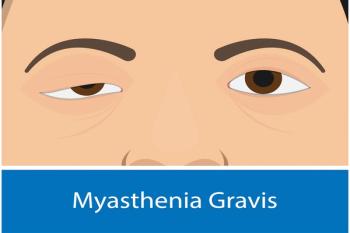
AI Use in Thoracic Medicine Continues to Evolve in Diagnostic Capabilities: Samir Shah, MD, MMM, FACR
Developments in artificial intelligence (AI) can help clinicians to diagnose thoracic conditions that may be miss on first glance.
Samir Shah, MD, MMM, FACR, chief medical officer of Qure.ai, discussed the developments in artificial intelligence (AI) that have occurred in the thoracic space and how these new developments can help both patients and clinicians in the long run.
This transcript has been lightly edited for clarity; captions are auto-generated.
Transcript
Can you give an overview of the current uses of AI in thoracic care?
Yes, I can. Right now, AI has been used in 2 different areas, and being used. First in robotics. Robotics is actually a form of artificial intelligence. It's not the most advanced form right now, but as you can probably tell in the news and everything else, robotics is a way in which to use intelligence to manipulate objects, et cetera, and that's one way that surgeons and interventional pulmonologists are using some advanced technology. It's been in use for a while. There's also another older form of artificial intelligence that's called natural language processing. For short, people call it NLP. Another term is called computational linguistics. It's basically a way to read radiology reports or pathology reports and actually look for times when radiologists have a suspicious nodule that they think is possibly lung cancer. It's a way to kind of aggregate and track those in a lung cancer screening program. Both of those technologies right now are very, very old-fashioned, almost outdated.
What is coming new, and one of them you've no doubt heard of, is generative AI, which is like ChatGPT-type technology, which can do much more than just read a report and understand some words based on certain rules. It actually understands context and understands language, and that is going to do so much more than actually just looking for nodules. It can understand which nodules to find. It can read all of the (electronic medical record) EMR, get data from the EMR, and make summaries because it uses intelligence to process and summarize data, and that prevents humans from having to go through a massive, massive collection of data in the EMR, even on 1 patient, and gives them an absolutely kind of summarized way of looking at things.
The other way is actually computer vision. So radiologists like me, we're missing nodules at times on X-rays. Not really on CT so much, but definitely on X-ray. One, we don't have time to read X-rays like we used to. And secondly, because of the time shortage, we don't look for the extra things like lung cancer. So let's say you're a patient that comes into the emergency room and you have a broken rib, et cetera. You might have a hidden lung cancer that the radiologist might miss.
With AI, it doesn't sleep. It's on all the time. It's going to look for those lung nodules. It's not going to have too many false positives or artificial nodules. It's going to actually find real, actionable nodules that could be early lung cancers. And that is a huge development, because right now we're finding lung cancer too late.
Oftentimes by the time we find it, it's either spread to other organs or the patient has advanced disease that is much, much less possible to cure. We want people to have a survival benefit, and so we want to stage shift, basically shift the stage of lung cancer to be found earlier so it can be treated, almost cured, with surgical techniques. So that's really how AI is coming into the thoracic world.
Newsletter
Stay ahead of policy, cost, and value—subscribe to AJMC for expert insights at the intersection of clinical care and health economics.













































